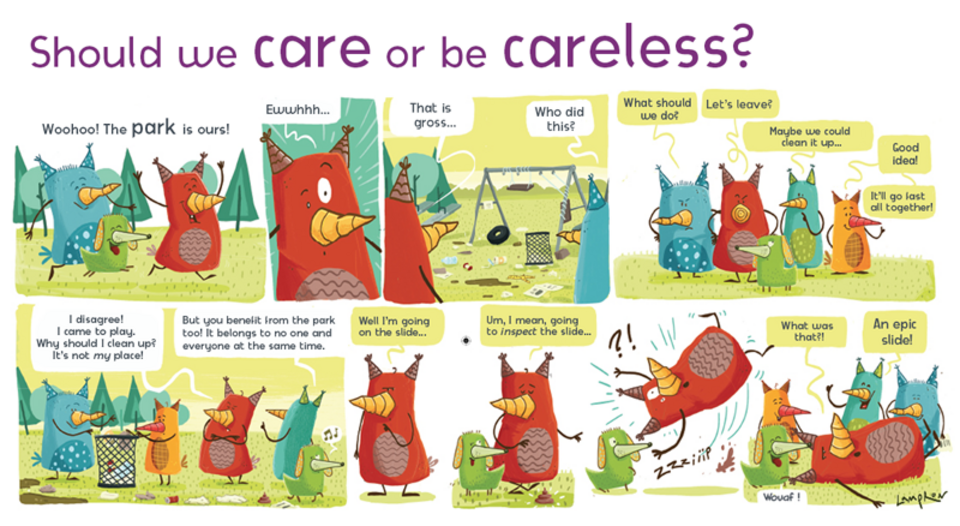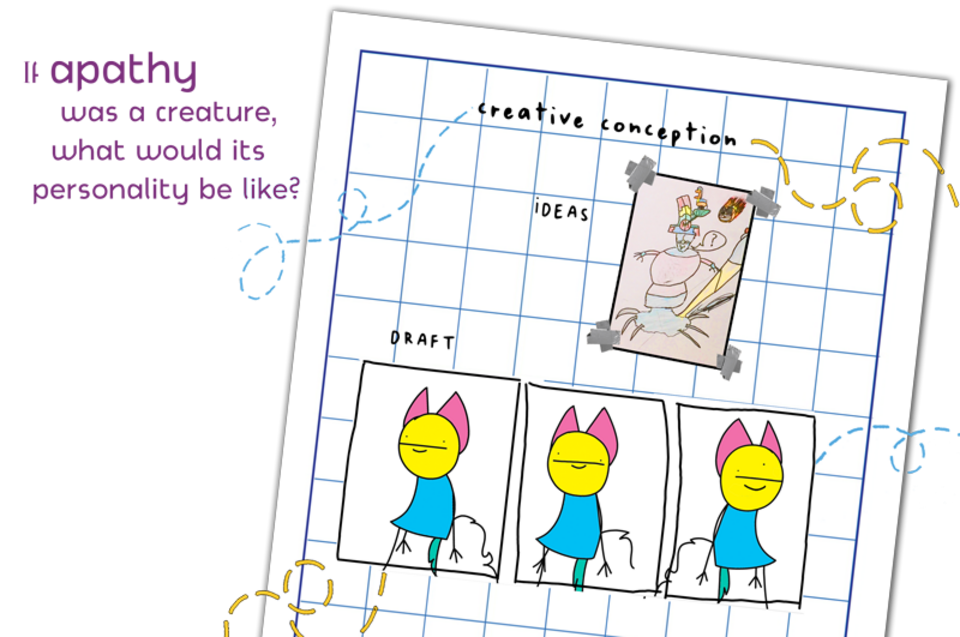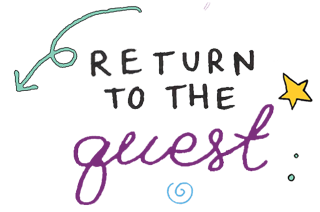
Apathy as an anti-hero (Part 1)
| Objective: To plan the creation of the anti-heroic comic strip of the concept of apathy! |
Duration : 60 to 90 minutes
Material :
-
A sheet of paper or cardboard
-
Pencils, eraser
Instructions :
Apathy is a limp, sluggish creature of great indifference, whose inability to act and be moved puts it in rather uncomfortable and often boring situations! What misadventure will it encounter today?
...
-
Prepare the sheet. Your mission will be to create a comic strip about the misadventures of apathy! To help you get lots of ideas and organize them, prepare your sheet by drawing a horizontal line to separate it into two equal rectangles. In the top rectangle write "ideas" and in the bottom rectangle write "draft."
-
Think about your first ideas. Brainstorm in the "ideas" section of your paper and let your imagination run wild!
- Main character: Using the approach from the Idea Stretching activity, first define apathy, then imagine a creature that matches your definition. Visualize its appearance and behaviour, thinking about its personality, thoughts and feelings.
Tip : Have you ever lacked interest or motivation? To help you conceptualize apathy, you can think about your own actions, thoughts and feelings when you are in this state. By exaggerating these characteristics, you can create apathy's character! - Secondary characters: Are there any other characters in your story? By participating in the plot, the supporting characters can help you bring out different facets of apathy. Who would you like to interact with apathy: creativity, solitude, resilience, worry...? Why do you think this meeting would be interesting?
- Situation: What would you like to say about apathy: reveal its origins, explain why it refuses to act, explore the consequences of its indifference, prove its importance? What is the goal of your story? Where does the action take place? What happens?
- Tone: Is your story a comedy or a thriller? Is the atmosphere dark or cheerful? Choose the best tone to convey your ideas!
- Inspiration: For inspiration and a better understanding of the key features of comics, don't hesitate to consult the Philosophy Corner of Les Débrouillards and Les Explorateurs magazines, or to leaf through a few comic books if you have some at home. Observe the different types of speech bubbles, the changes in box sizes, and all the other techniques that allow you to express the actions, thoughts and feelings of the characters!
- Main character: Using the approach from the Idea Stretching activity, first define apathy, then imagine a creature that matches your definition. Visualize its appearance and behaviour, thinking about its personality, thoughts and feelings.
-
Sketch your ideas. Now that you've got a bunch of great ideas, it's time to see what they look like! In the “draft” area of your sheet, sketch out the different panels in your comic strip and add a first draft of your dialogue in the bubbles. It's not your final creation yet, so these drawings don't need to be too neat. It's mainly to see if your ideas work and to change them if necessary. You'll find that you'll have lots of new ideas as you start to create!
That's all for now! Don't forget that this activity is only the first part of your creative project! You can start the second part—Creative Construction—right after this one or after you've done the Philosophical Picnic, but we recommend that you at least take a break. You’ve earned it!
...
Bonus : To inspire your creative thinking, you can read the following comic strip, then ask yourself the following questions: Should you care... about others? ...about the environment? ...about yourself? Why should—or shouldn't—you care? Is it possible to worry too much? Perhaps indifference can be justified sometimes... Is boredom a form of indifference? Is indifference a consequence of boredom? Why or why not? |

This comic strip is reproduced with permission from the philosophy corners of our community partner, Les Explorateurs magazine. It was produced in collaboration with our team at the Institute of Philosophy, Citizenship and Youth.

| Tricks for tots : Have you ever seen a comic strip in a single panel—or one box? This is the format that many comic strip artists prefer, especially those who publish their creations in newspapers. You can try it out too! Once you've created the character of apathy, think of a message that it would like to share with our world. The message could be a tip for having less to worry about, or it could be a joke to distract those who care too much! |
| Tips for teens : In literature as in film, we often distinguish between heroes and anti-heroes. While the hero is virtuous, courageous, revered, the anti-hero is mundane, ordinary, misunderstood. For you, what is a hero? Can a completely ordinary person be heroic? Why or why not? Think of examples of actions that are completely ordinary and yet seem heroic to you... Is the anti-hero a hero in disguise? |
Share your creative reflections by sending them via email.
Include photos of your projects and notes of your thoughts, as well as your first name and your age!


